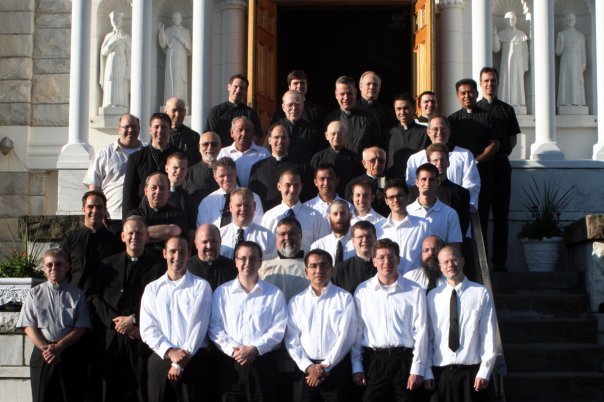An excerpt from The Metropolitan – May 1853, pg. 179 and following, from an article about “The Love of Mary.”
In its bearings on Christian faith and worship, then, we cherish the love of Mary, and are anxious to see devotion to her increased. But we are also anxious to see it increase, as the best preservative against the moral dangers of our epoch. Mary is the mother of chaste love, and chaste love is that which in our age is most rare. The predominating sin of our times is that of impurity, at once the cause and the effect of the modem sentimental philosophy. All the popular literature of the day is unchaste and impure, and it boldly denounces marriage as slavery and demands that loose reins be given to the passions. Catholic morality is scouted as impracticable and absurd; law is regarded as fallen into desuetude; intellect is derided; reason is looked upon as superfluous, if not tyrannical; and the heart is extolled as the representative of God on earth. Feeling is honored as the voice of the Most High, and whatever tends to restrain or control it is held to be a direct violation of the will of our Creator. Hence passion is deified, and nothing is held to be sacred but our transitory feelings. Hence every where we find an impatience of restraint, a loud and indignant protest against all rule or measure in our affections and all those usages and customs of past times intended as safeguards of manners and morals, and a universal demand for liberty, which simply means unbounded license to follow our impure or perverted instincts, and to indulge our most turbulent and unchaste passions, without shame or remorse.
The sentimental philosophy taught by that impure citizen of Calvin’s city of Geneva, Jean Jacques Rousseau, in his Confessions and Nouvelle Heloise, and which is popularized by such writers as Goethe, George Sand, Eugene Sue, Thomas Carlyle, Theodore Parker, Ralph Waldo Emerson, Margaret Fuller, and, to some extent, Bulwer Lytton, consecrating corrupt concupiscence, has effected an almost universal dissolution of manners and deprivation of morals. All bonds are loosened, and the very existence of society is threatened by the fearful and unrelenting warfare waged upon the family as constituted by Catholic morality. The terrible revolutions which for the last sixty or seventy years have shaken society to its foundations, and which have been repressed and are held in check for the moment only by the strong arm of arbitrary power, are only the outward manifestations of the still more terrible revolutions which have been going on in the interior of man; and the anarchy which reigns in society is only the natural expression of the anarchy that reigns in the bosom of the individual. In the non-Catholic world, and even in nominally Catholic countries, impurity has gained a powerful ascendancy, and seeks to proclaim itself as law, and to denounce whatever is hostile to it as repugnant to the rights both of God and man. Chastity is denounced as a vice, as a crime against nature, and the unrestrained indulgence of the senses is dignified with the name of virtue, nay, is denominated religious worship, and we may also fear that fornication and adultery may again be imposed as religious rites, as they were in ancient Babylon and other cities of the East.
The last, perhaps the only, remedy for this fearful state of things, is to besought in promoting and extending [devotion to] Mary. Society is lapsing, if it has not already lapsed, into the state in which Christianity found it some eighteen hundred years ago, and a new conversion of the Gentiles has become necessary. Christian society can be restored only by the same faith and worship which originally created it. Jesus and Mary are now, as then, the only hope of the world, and their power and their goodness will remain undiminished. The love of Mary as Mother of God redeemed the pagan world from its horrible corruptions, introduced and sustained the Christian family, and secured the fruits of the sacrament of marriage. It will do no less for our modem world, if cultivated; and we regard as one of the favorable signs that better times are at hand, the increasing devotion to Mary. This increasing devotion is marked throughout the whole Catholic world, as is manifest from the intense interest that is felt in the probable approaching definition of the question of the Immaculate Conception. Nowhere is the change in regard to devotion to Mary as the Mother of God more striking, than among the Catholics of Great Britain and of our own country. This devotion is peculiarly Catholic, and any increase of it is an indication of reviving life and fervor among Catholics; and if Catholics had only the life and fervor they should have, the whole world would soon bow in humble reverence at the foot of the cross. It is owing to our deadness, our lack of zeal, our lack of true fervor in our devotions, that so many nations and such multitudes of souls are still held in the chains of darkness, under the dominion of Satan.
There are two ways in which the love and service of Mary will contribute to redeem society and restore Christian purity, — the one the natural influence of such love and service on the heart of her devotees, and the other the graces which in requital she obtains from her Son and bestows upon her clients. Mary is the mother of chaste love.


